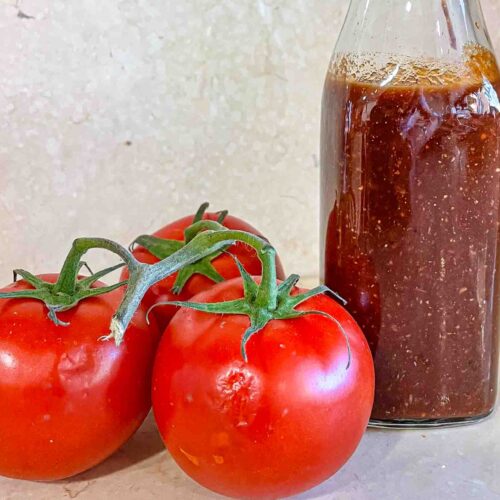The two main ingredients in a classic Japanese miso soup are dashi stock and miso paste.
What is added beyond that varies, but often includes wakame seaweed, green onions and cubes of silken tofu. Often thinly sliced shiitake mushrooms are added as well, as is daikon radish or aburage, a type of Japanese deep fried tofu.
Of those two main ingredients, the miso and the dashi, one is made entirely from plants. That is the miso paste. The other, the dashi, is made from a mix of a type of kelp, called kombu, and bonito flakes. Bonito is a type of tuna which has then been smoked and dried. This mix of kelp and smoked fish makes for a very uniquely flavored stock with distinct accents of both ocean and smoke. However, if you are completely avoiding animal based foods, this quintessential Japanese ingredient makes a classic miso soup a no-go.
It turns out, though, that it is entirely possible to recreate the taste of dashi without the use of bonito flakes. The secrets are smoked paprika and nutritional yeast; in addition, of course, to the original kombu. The paprika provides the subtle smoky flavor while the nutritional yeast provides the umami, the depth if you will. The kombu rounds up the trio with lovely hints of ocean.
Kombu is sold in dried chunks and, luckily, finding it in shops is becoming increasingly easy; particularly in health food stores or at whole foods markets. Alternatively, it can be ordered online.
So, without further ado, I give you my version of miso soup based on my bonito-free dashi stock.

Vegan Miso Soup
Ingredients
- 10 g dried kombu
- 4 cups (1 liter) water
- 1/2 teaspoon smoked paprika
- 1 teaspoon nutritional yeast
- 4 tablespoons white/blond/shiro miso paste
- A pinch of wakame seaweed Optional
- Finely chopped green onions Optional
- Small cubes of silken tofu Optional
- Thinly sliced shiitake, daikon or aburage Optional
Instructions
- Combine the kombu and the water in a pot and leave the kombu to soften for 30 minutes.
- Once soft, place the pot on the stove and heat it up gently. You want it to just about reach boiling point without it actually getting to a proper boil. When you reach that point, fish out the kombu and discard (or better yet, use it as compost).
- Now bring the liquid to a proper boil and add the smoked paprika and the nutritional yeast. Boil for about a minute before removing from heat. Your dashi stock is now done. If you are proceeding to make miso soup you can simply keep the stock simmering and continue as described below. If you are going to use the dashi stock for some other purpose, like maybe in my Japanese Spinach, you can keep it in the fridge for a few days or else freeze it in desired portions sizes.
- To make the miso soup: Shortly before serving, whisk in the miso paste. Make sure there are no more lumps before adding whatever other ingredients you'd like to add, if any, and serve immediately.
- You can keep miso soup in the fridge for a few days, in a sealed container.
Curious about that Japanese Spinach I referred to in the recipe instructions? You can find that recipe right here.





